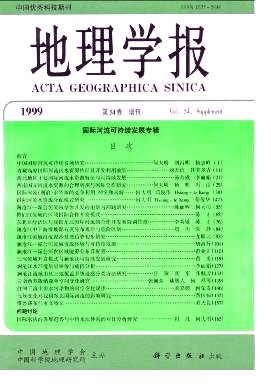MA Bao qi, LI Ke, WU Wei min, NIE Zong sheng, YANG Fa, GUO Wen sheng, HE Fu li
There are 6 major rivers, named Wudanggou, Shuijiangou, Meidaigou, Dashuigou, Shuimogou and Halagou, from west to east, in Mt. Daqingshan, the upthrown block of the Daqingshan Piedmont Fault, which is an active normal fault. Based on paleoearthquakes having occurred along it, the Piedmont Fault can be divided into 5 segments, one of which has undergone unique faulting history. Accordingly, the 6 rivers, Crossing different segments of the Piedmont Fault, have differences in their landforms. The features of river valley landforms in Mt. Daqingshan reveal that the 3 middle segments are more active than the other 2 segments of the fault. In the river valleys, 2~5 terraces, having developed since 23 ka BP of Late Pleistocene, are identified. In the 4 west rivers’ valleys, the number of terraces is 4~5; the highest terrace is 80~120 m above the current river bed; all of the terraces have been displaced by the Daqingshan Piedmont Fault. But in the 2 east rivers’ valleys, the number of terraces is fewer, only 2~4; the highest terrace is 20~45 m; the latest terrace, formed in Holocene, has not been displaced yet. The model diagram of longitudinal profiles of the 6 rivers’ valleys is a parabolic pattern: h=aln . The longitudinal profile of the 4 west rivers’ valleys has a convex parabolic pattern, n<1; but that of the 2 east rivers’ valleys has a concave pattern, n>1. The more active a segment of the Fault is, the more convex the parabolic pattern of the river’s valley crossing the segment is. From west to east, Vf value of the river mouth at the Piedmont Fault becomes higher. Based on the detailed landforms and their formation ages of the rivers’ valleys, we can drive some conclusions on the activities of the Daqingshan Piedmont Fault. Since 23 ka BP, the uplift amount of Mt. Daqingshan is the same as the elevation of terrace Ⅴ near the Fault, 80~120 m for the 3 middle parts, and 20~45 m for the east part. During Holocene, the uplift amount is about 17~18 m for the 3 middle parts and less than 6 m for the east part. Obviously, the slip rate of the Daqingshan Fault can be calculated.
